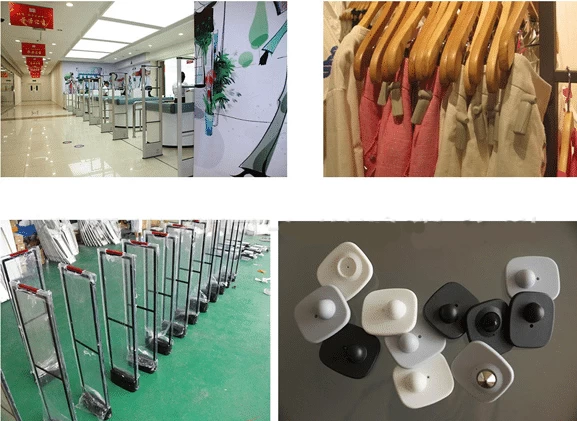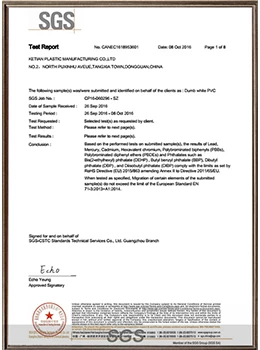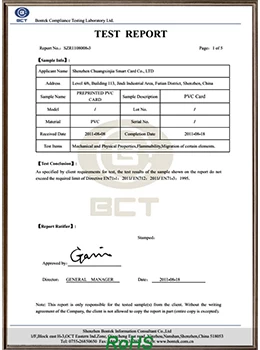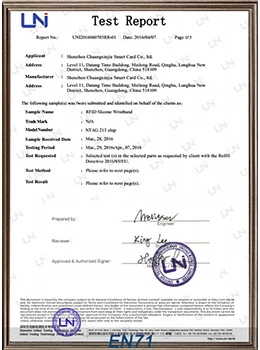RFID can effectively solve the increasingly rampant product anti-counterfeiting phenomenon.Garment manufacturers place their own unique RFID tags in the carton at the same time as the garment, and each carton has its own unique ID code.

It is estimated that the market affected by counterfeit products in the world each year reaches 300 billion US dollars, which is quite a staggering amount and is 10% of the total world trade.While the counterfeit products flooded the market, they also caused a lot of job losses. It is estimated that 100,000 people in the EU lost their jobs because of counterfeit products. Not to mention, some inferior products of special products, such as aircraft parts and medicines, directly threaten people's lives.
For manufacturers, one of the main advantages of RFID is that it can be integrated directly into existing products, machines or equipment without requiring major changes to existing production equipment. The RFID tag itself has a read-write function, which can be written into the manufacturer's unique encrypted code and easily integrated into various commodities.
An important factor in whether RFID systems can be used in business is that the same type of tags can be applied to different products, because this can lead to the expansion of the scale of tag production and ultimately reduce the price of tags to an acceptable range. However, for some valuable goods, the size of the label is far more important than the price of the label.
Overall, UHF tags are larger than UF tags. For small and valuable products, a slightly larger label is likely to affect the appearance of the product. In this case, the size of the label is required to be as small as possible without causing obstacles to users. From the perspective of tag storage data, read-only tags are generally one-time programmable and low cost, but a backup database must be available for effective tracking.
The storage capacity of the tag data that can be read and written multiple times is relatively large. Generally, all product information can be stored without the support of a backup database. This type of tag is more expensive and larger than a one-time programmable tag.
For manufacturers, the last thing they want to see is that RFID data reading slows down production. UHF tags have a longer reading distance and are generally more suitable for use on cargo boxes or pallets; HF reading distances are shorter and suitable for some fixed places such as shelves.
Another important factor to consider when using RFID tags is the material of the goods. This has a particularly significant impact on products that often come into contact with water during use, or on products where the label is metal. If it is the former case, the tag must be waterproof and use HF technology; because the longer wavelength of the HF system is not easy to be attracted, the high-frequency RF signal is easier to penetrate water or other liquids. HF tags have been tested on textiles and clothing for many years and have proven to be resistant to large variations in liquids, pressure and temperature differences.
When the label is attached to a metal surface, it also affects the RFID system. RF signals cannot pass through metals, so when metal materials are relatively close to HF antennas or UHF tags and readers, the reading and writing distance of RFID systems will be greatly affected. Another adverse effect is absorption: metals can absorb RF signals, which also affects HF and UHF tags to varying degrees.
The read and write distance of HF tags is relatively short. When the UHF tag is far enough away from the metal surface, its reading and writing distance is relatively long; but if the tag is too far away from the metal surface, its protruding part will affect the usability of the tag, so the ideal height is 5mm.

Garment manufacturers place their unique RFID read-write tags in the carton together with the produced clothing, and each carton has its own unique ID code. When the production is completed and shipped, each carton passes an RFID tag reader, and all carton information is read and transmitted to the PC. The PC software system compares the actual information read with the planned delivery of the carton to determine whether it will be released. At the same time, if the carton is released, the ID number of the carton will be written into the memory of each label and locked.
The manufacturer can also write the corresponding information to other data blocks of the tag during the QA inspection and other stages through the handheld RFID device. In this way, the entire shipping process from production to distribution center to retail can be recorded.









